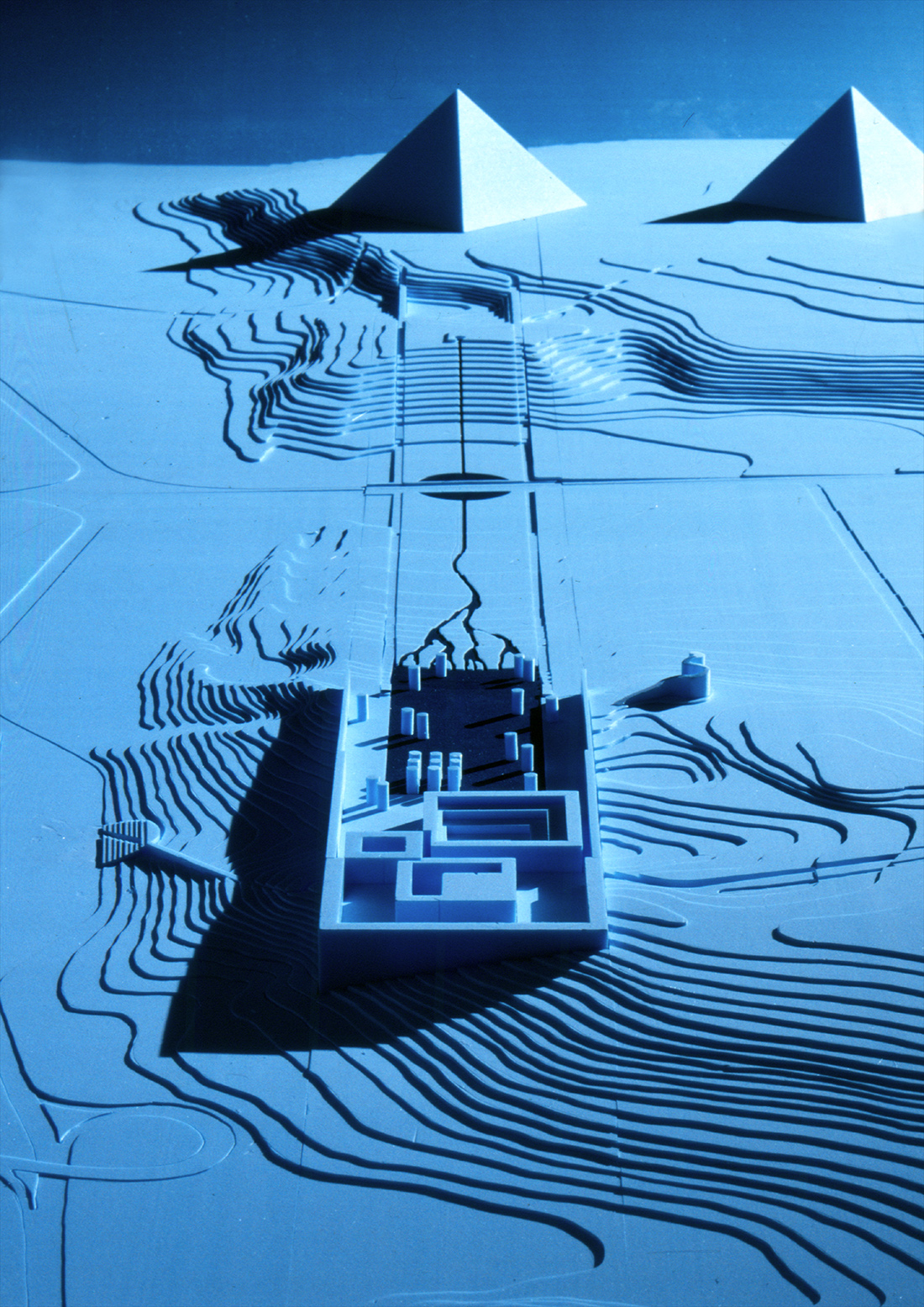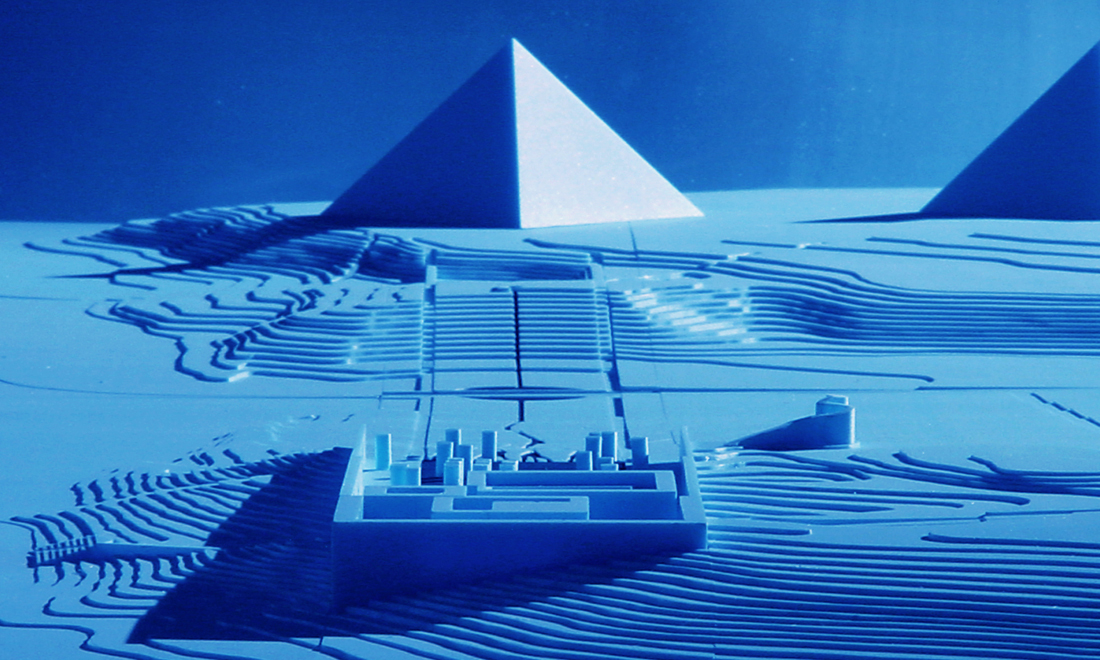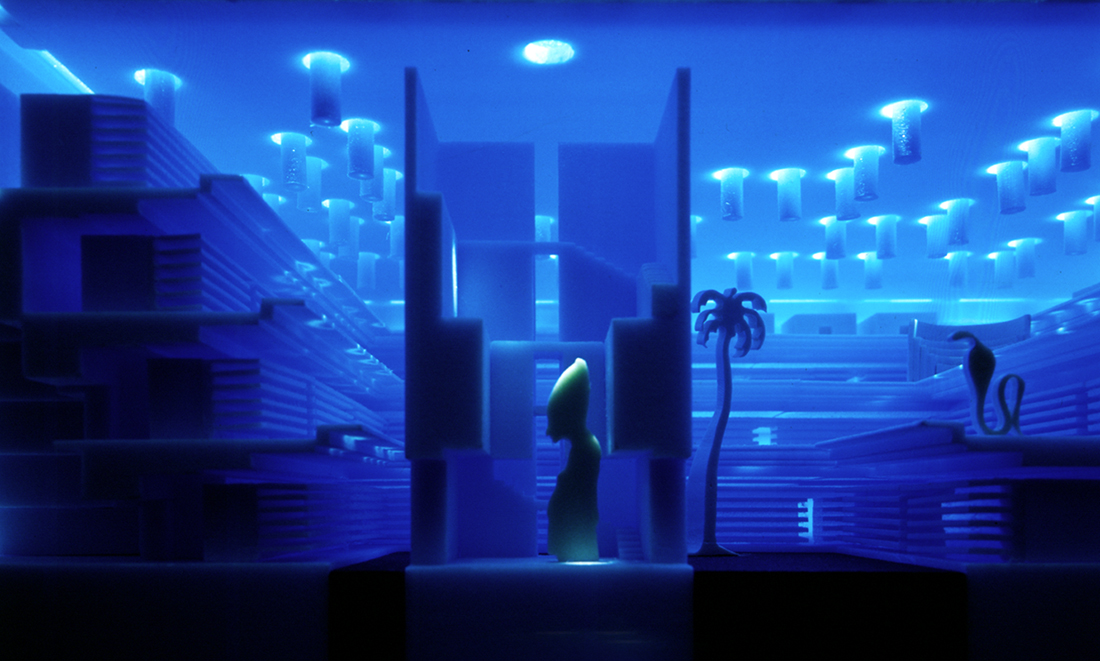‘O Mother Nut, spread thy wings over me like the imperishable stars!’
THE CULTURAL MESSAGE
Yearning for eternity
How the Ancient Egyptians must have loved life; how unbearably absurd they must have found death… and what a glorious victory they won over their own mortality: art, they had art that they would not die of truth; they invented art – invented architecture. They were able to do this only because they pursued an unconditional faith in the permanence, in the timelessness of their artefacts, a belief in the ‘eternal recurrence of the same’, an insistence on consistency: consistency of time, space, material, ‘style’ – across more than 3000 years.
The Grand Egyptian Museum should ‘span the area between heaven and earth’, – says the brief – between here and infinity, between today and eternity. The magnificent exhibits in the collection fulfil that task, incontestably – the museum as their built shelter can do justice to its task only if it, too, insists on the consistency of millennia and salvages it for our civilisation gone in the teeth, re-invents itself, 5000 years afresh, in an almost archaic interpretation of Modernity: tradition does not mean ‘worshipping ash, but preserving the fire’.
THE GEM PRECINT
Haram
A complex programme demands a complex spatial structure, a noble locus demands a clear form: a ‘megaform as urban landscape’ can resolve that contradiction – and always has, with Djoser’s pyramid district in Saqqara, with al-Haram ash-Sharif in al-Quds, for example.
The goal was always to salvage a place from nature – or from sprawling settlement – where the order and yearning of a human mind might be preserved, where its permanence might be inscribed. The unconditional belief in this demarcation – from chaos all around – gave birth to architecture, space, architectural space. We call this border ‘wall’, and it is the supreme tool in the creation of space, in architecture; a ‘supreme tool’, too, on the dune by the Plateau of Giza: – the GEM unfurls in the shadow of the Great Wall as an urban tissue of buildings, squares and parks. A hierarchy of places provides a priori orientation for the visitor, a hierarchy of uses provides an almost urban welcome for the residents around it.
THE ARCHITECTURE
A single stone
Almost 5000 years ago Imhotep of Saqqara ‘invented’ building in stone – he invented a thing which went beyond binding and bending, beyond bricolage… architecture. Ever since the Stone Wall – the silence of this wall in light, and the space it helps to form – has been the sensuously manifest quintessence of any architecture, which deserves the name. Only this heavy wall of stone can convey a feeling of permanence – and this very insinuation can bestow architectural status on a nondescript built artefact.
The great hollowed block on the dune at Giza, the single stone, be it cast or hewn, concrete or limestone, will take its place in a chain of monuments at Meidum, Lisht, Dashur, Saqqara, Abusir, Giza and Abu Roash, is part of this first imperishable statement that architecture was able to utter about itself. This single stone is a hope and a wager to parry the comedy of style and fashion that is dispatched onto the catwalk again and again with changing labels: as the architecture of a ‘jumping universe’, as the architecture of ‘time and speed’, often enough as restoration barren as a paper flower or stiff as a poker, as a stumbling from high-tech craft to corporate design.
But continuity casts an enchanted cloak over the land of the Nile – and only the enchantment and timelessness of spaces, stone spaces, only an architecture of ‘archaic Modernity’ can preserve the continuity so imperiously demanded by the splendour that was Saqqara, the glory that was Giza.
GRUNDSTÜCK
Gizeh Ägypten
NUTZUNG
Museum
AUSLOBER
Ägyptisches Kultusministerium
unter der Schirmherrschaft der UNESCO
ARCHITEKT
Axel Schultes Architekten
Frank Schultes Witt
Prof. Magdy A. Yacoub Kairo
ENTWURF
Axel Schultes Charlotte Frank
MITARBEIT
Hiby Schuldes Stachat Ulrich
WETTBEWERB
2002
TRAGWERGSPLANUNG
Dr. Alaa Sherif Ecogim Kairo
TECHNISCHE GEBÄUDEAUSRÜSTUNG
Prof. Dr. Klaus Daniels HL-Technik München
FOTOS
Axel Schultes Charlotte Frank







